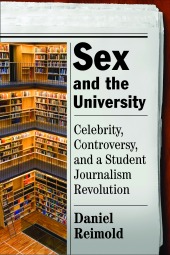My contribution to the now way-too-popular “Random” list phenomenon continues below with Part 3 of “25 Random Things About Modern College Media.” (Also see Part 1 and Part 2.) As promised, today’s segment is all about the tough love, presenting some of the harsher truths about 21st-century collegemediatopia. First up…
—
11) Student media online are still in a state of shovelware and disrepair. Forget the biggie publications for a moment, with their Weberrific, tricked-out WordPress pages. The truth: A majority of media outlets at smaller schools and many schools outside the states have Web sites that make my new media blood curdle. They are amateur-ish, ill-designed, static, burdened with text, lacking images, and an absolute affront to link journalism. Worse yet, some outlets have no Web presence at all or scant efforts, such as a site housing PDFs of past print issues.
—–
12) TWEET, TWeet, tweet…… The Twitter scene has flat-lined among student media overall after a wave of excitement months back when a bunch of outlets started accounts. Only a few outlets use it for anything more than advertising their stories. The question: Has it simply not caught on yet or has it been a bit over-hyped and is not really that necessary for student news outlets day to day?
—–
13) Is that a blog I see before me? Where are the blogs? A recent Editor & Publisher piece predicted that journalism’s future will include the emergence of ‘beat blogging,’ or a reporter’s 24-7 coverage of a specific news area using all forms of media for presentation and essentially building a niche blog within his/her news outlet’s site. This is NOT happening en masse in the land of college media as of yet. While there are a few notable exceptions, I remain shocked, SHOCKED, at the lack of blogs among established SMOs (student media outlets). Many j-students blog on their own, but it’s not being incorporated into the media outlets at which they work (again, certainly exceptions). We are all praying to the micropayment Gods right now, but let’s be honest: Individual stories will not be what keep people coming back to our sites. Bylines are no longer enough. Readers want to see quality content delivered atop a personality that they relate to or enjoy (or even passionately hate).
—- –
14) Most student publications still lack independence. College media staffers of past generations fought for freedom and some earned it. Their efforts remain iconic. But liberty and justice for all student pubs have not been realized. Collegemediatopia has come a long way, but far too many outlets are still beholden and at times smothered by their school sponsorship. The recent MTSU mess is an example of why such a situation can be catastrophic: One day the admins decide pulling $100,000 from The Sidelines budget might be a good thing. If the decision passes, boom, done, the print paper is gone. And there’s basically nothing student staffers can do about it.
—
15) Student news media still suffer from SOS SASS (Same Old Stories, Semester After Semester, Syndrome). As I have written before, there are simply some stories that on a scroll through the archives of any student media outlet pop up again and again and again, sometimes with a fresh spin (although many times, not so much), but always with the same core issue or topic intact. Why are we covering the same stories over and over and over? I understand student readers graduate and staff turnover at SMOs is high and knowledge of past issues is not a priority, but something needs to be done to break out of writing yet again about the debate club’s regional tournament appearance or the annual sorority Easter egg hunt. The problem is the scrapbook journalism mentality still pervading many SMOs. We must refrain from writing so many stories about ‘official’ events simply because they happen and there are 11.5 people involved in them who will care to read a recap. If there was ever a time for better between-the-lines, out-of-the-box reporting, it is now.
—
Stay tuned for Part 4 next week, when I promise I’ll be more optimistic! :-)
Read Full Post »





